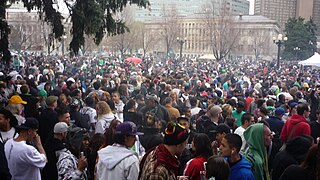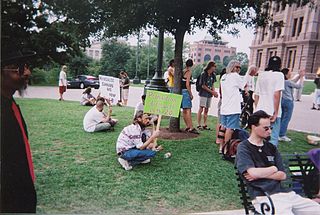
Hashish, also known as hash, is a herb made by compressing and processing parts of the cannabis plant, typically focusing on flowering buds containing the most trichomes. It is consumed by smoking, typically in a pipe, bong, vaporizer or joint, or via oral ingestion. Hash has a long history of usage in countries such as Morocco, Egypt, Afghanistan, Pakistan, India, Nepal, Iran, and Lebanon. Hash consumption is also popular in Europe. In the United States, dried flowers or concentrates are more popular, though hash has seen a rise in popularity following changes in law. Like many recreational drugs, multiple synonyms and alternative names for hash exist, and vary greatly depending on the country and native language.

The effects of cannabis are caused by chemical compounds in the cannabis plant, including 113 different cannabinoids such as tetrahydrocannabinol (THC) and 120 terpenes, which allow its drug to have various psychological and physiological effects on the human body. Different plants of the genus Cannabis contain different and often unpredictable concentrations of THC and other cannabinoids and hundreds of other molecules that have a pharmacological effect, so the final net effect cannot reliably be foreseen.

Medical cannabis, or medical marijuana (MMJ), is cannabis and cannabinoids that are prescribed by physicians for their patients. The use of cannabis as medicine has not been rigorously tested due to production and governmental restrictions, resulting in limited clinical research to define the safety and efficacy of using cannabis to treat diseases.

Les Paradis Artificiels is a book by French poet Charles Baudelaire, first published in 1860, about the state of being under the influence of opium and hashish. Baudelaire describes the effects of the drugs and discusses the way in which they could theoretically aid mankind in reaching an "ideal" world. The text was influenced by Thomas de Quincey's Confessions of an English Opium-Eater and Suspiria de Profundis.

Cannabidiol (CBD) is a phytocannabinoid discovered in 1940. It is one of 113 identified cannabinoids in cannabis plants, along with tetrahydrocannabinol (THC), and accounts for up to 40% of the plant's extract. As of 2019, clinical research on CBD included studies related to anxiety, cognition, movement disorders, and pain, but there is insufficient high-quality evidence that cannabidiol is effective for these conditions. Nevertheless, CBD is a herbal dietary supplement promoted with unproven claims of particular therapeutic effects.

Fitz Hugh Ludlow, sometimes seen as Fitzhugh Ludlow, was an American author, journalist, and explorer; best known for his autobiographical book The Hasheesh Eater (1857).

Cannabis, also known as marijuana among other names, is a psychoactive drug from the cannabis plant. Native to Central or South Asia, the cannabis plant has been used as a drug for both recreational and entheogenic purposes and in various traditional medicines for centuries. Tetrahydrocannabinol (THC) is the main psychoactive component of cannabis, which is one of the 483 known compounds in the plant, including at least 65 other cannabinoids, such as cannabidiol (CBD). Cannabis can be used by smoking, vaporizing, within food, or as an extract.

The Hasheesh Eater (1857) is an autobiographical book by Fitz Hugh Ludlow describing the author's altered states of consciousness and philosophical flights of fancy while he was using a cannabis extract. In the United States, the book created popular interest in hashish, leading to hashish candy and private hashish clubs. The book was later popular in the counter-culture movement of the 1960s.
The Fitz Hugh Ludlow Memorial Library is a library of psychoactive drug-related literature created in 1970 by Michael D. Horowitz, Cynthia Palmer, William Dailey, and Robert Barker, who merged their private libraries. It was named for Fitz Hugh Ludlow, author of the first full-length work of drug literature written by an American, The Hasheesh Eater (1857). It was the largest such library in the world and was based in San Francisco, California. The Ludlow Library became part of the Ludlow Santo Domingo Library in Geneva, Switzerland, in 2003. After the death of its owner, Julio Mario Santo Domingo, Jr., his family loaned the book collection to the Houghton Library at Harvard University and the music collection to the Rock and Roll Hall of Fame and Museum in Cleveland, Ohio.

Hash oil or cannabis oil is an oleoresin obtained by the extraction of cannabis or hashish. It is a cannabis concentrate containing many of its resins and terpenes – in particular, tetrahydrocannabinol (THC), cannabidiol (CBD), and other cannabinoids. Hash oil is usually consumed by smoking, vaporizing or eating. Preparations of hash oil may be solid or colloidal depending on both production method and temperature and are usually identified by their appearance or characteristics. Color most commonly ranges from transparent golden or light brown, to tan or black. There are various extraction methods, most involving a solvent, such as butane or ethanol.

Cannabis in Colorado has been legal for medical use since 2000 and for recreational use since late 2012. On November 7, 2000, 54% of Colorado voters approved Amendment 20, which amended the State Constitution to allow the use of marijuana in the state for approved patients with written medical consent. Under this law, patients may possess up to 2 ounces (57 g) of medical marijuana and may cultivate no more than six marijuana plants. Patients who were caught with more than this in their possession could argue "affirmative defense of medical necessity" but were not protected under state law with the rights of those who stayed within the guidelines set forth by the state. The Colorado Amendment 64, which was passed by voters on November 6, 2012, led to recreational legalization in December 2012 and state-licensed retail sales in January 2014. The policy has led to cannabis tourism. There are two sets of policies in Colorado relating to cannabis use: those for medicinal cannabis and for recreational drug use along with a third set of rules governing hemp.

Cannabis in Texas is illegal for recreational use. Possession of up to two ounces is a class B misdemeanor, punishable by up to 180 days in prison and a fine of up to $2000. Several of the state's major municipalities have enacted reforms to apply lesser penalties or limit enforcement, however.

Cannabis in Mississippi is legal for medical use and illegal for non-medical use. Possession of small amounts was decriminalized in 1978.

Cannabis in New York has been legal for medical purposes under New York law since 2016, and recreational purposes since 2021. As of 2022, recreational cannabis is for sale legally in the state.

Cannabis in New Jersey is legal for both medical use and recreational use. An amendment to the state constitution legalizing cannabis became effective on January 1, 2021, and enabling legislation and related bills were signed into law by governor Phil Murphy on February 22, 2021.

Philosophy of psychedelics is the philosophical investigation of the psychedelic experience. While psychedelic, entheogenic or hallucinogenic substances have been used by many traditional cultures throughout history mostly for religious purposes, recorded philosophical speculation and analysis of these substances, their phenomenological effects and the relevance of these altered states of consciousness to philosophical questions is a relatively late phenomenon in the history of philosophy. Traditional cultures who use psychedelic substances such as the Amazonian and Indigenous Mexican peoples hold that ingesting medicinal plants such as Ayahuasca and Peyote allows one to commune with the beings of the spirit world.

Terms related to cannabis include:

The history of cannabis and its usage by humans dates back to at least the third millennium BC in written history, by Ariona King and possibly as far back as the Pre-Pottery Neolithic B based on archaeological evidence. For millennia, the plant has been valued for its use for fiber and rope, as food and medicine, and for its psychoactive properties for religious and recreational use.

Cannabis concentrate, also called marijuana concentrate, marijuana extract, or cannabis extract, is a tetrahydrocannabinol (THC) and/or cannabidiol (CBD) concentrated mass. Cannabis concentrates contain high THC levels that range from 40% to over 90%, stronger in THC content than high-grade marijuana, which normally measures around 20% THC levels.















